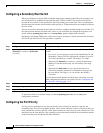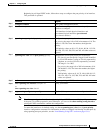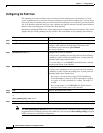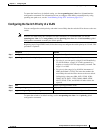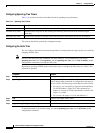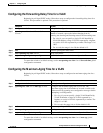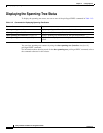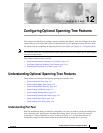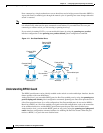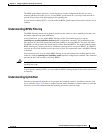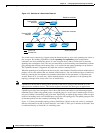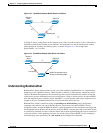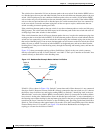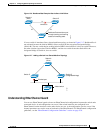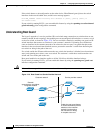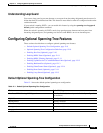
12-2
Catalyst 2940 Switch Software Configuration Guide
78-15507-02
Chapter 12 Configuring Optional Spanning-Tree Features
Understanding Optional Spanning-Tree Features
Ports connected to a single workstation or server should not receive bridge protocol data units (BPDUs).
A port with Port Fast enabled goes through the normal cycle of spanning-tree status changes when the
switch is restarted.
Note Because the purpose of Port Fast is to minimize the time ports must wait for spanning-tree to converge,
it is effective only when used on ports connected to end stations. If you enable Port Fast on a port
connecting to another switch, you risk creating a spanning-tree loop.
If your switch is running PVST+, you can enable this feature by using the spanning-tree portfast
interface configuration or the spanning-tree portfast default global configuration command.
Figure 12-1 Port Fast-Enabled Ports
Understanding BPDU Guard
The BPDU guard feature can be globally enabled on the switch or can be enabled per interface, but the
feature operates with some differences.
At the global level, you can enable BPDU guard on Port Fast-enabled ports by using the spanning-tree
portfast bpduguard default global configuration command. Spanning tree shuts down ports that are in
a Port Fast-operational state. In a valid configuration, Port Fast-enabled ports do not receive BPDUs.
Receiving a BPDU on a Port Fast-enabled port signals an invalid configuration, such as the connection
of an unauthorized device, and the BPDU guard feature puts the port in the error-disabled state.
At the interface level, you can enable BPDU guard on any port by using the spanning-tree bpduguard
enable interface configuration command without also enabling the Port Fast feature. When the port
receives a BPDU, it is put in the error-disabled state.
Catalyst 6000
series switch
Catalyst 3550
switch
Catalyst 2940
switch
WorkstationsWorkstations
Server
Port
Fast-enabled port
Port
Fast-enabled
ports
Catalyst 2940
switch
87815



